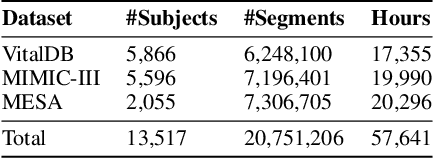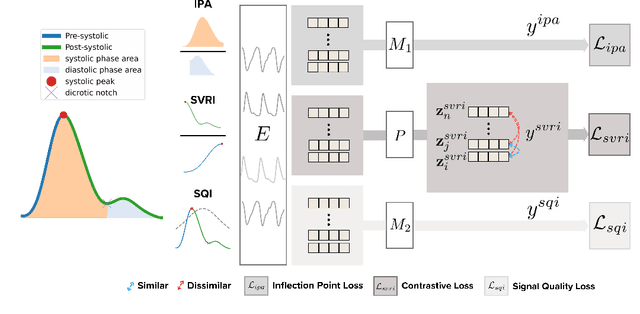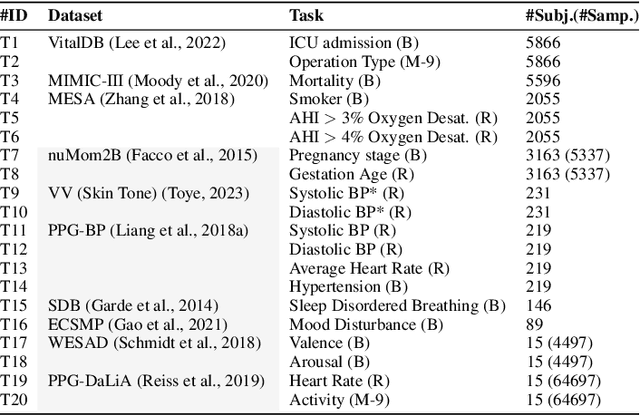PaPaGei: Open Foundation Models for Optical Physiological Signals
Paper and Code
Oct 27, 2024



Photoplethysmography (PPG) is the most widely used non-invasive technique for monitoring biosignals and cardiovascular health, with applications in both clinical settings and consumer health through wearable devices. Current machine learning models trained on PPG signals are mostly task-specific and lack generalizability. Previous works often used single-device datasets, did not explore out-of-domain generalization, or did not release their models, hindering reproducibility and further research. We introduce PaPaGei, the first open foundation model for PPG signals. PaPaGei is pre-trained on more than 57,000 hours of 20 million unlabeled segments of PPG signals using publicly available datasets exclusively. We evaluate against popular time-series foundation models and other benchmarks on 20 tasks of 10 diverse datasets spanning cardiovascular health, sleep disorders, pregnancy monitoring, and wellbeing assessment. Our architecture incorporates novel representation learning approaches that leverage differences in PPG signal morphology across individuals, enabling it to capture richer representations than traditional contrastive learning methods. Across 20 tasks, PaPaGei improves classification and regression performance by an average of 6.3% and 2.9%, respectively, compared to other competitive time-series foundation models in at least 14 tasks. PaPaGei is more data- and parameter-efficient than other foundation models or methods, as it outperforms 70x larger models. Beyond accuracy, we also investigate robustness against different skin tones, establishing a benchmark for bias evaluations of future models. Notably, PaPaGei can be used out of the box as both a feature extractor and an encoder for other multimodal models, opening up new opportunities for multimodal health monitoring
 Add to Chrome
Add to Chrome Add to Firefox
Add to Firefox Add to Edge
Add to Edge